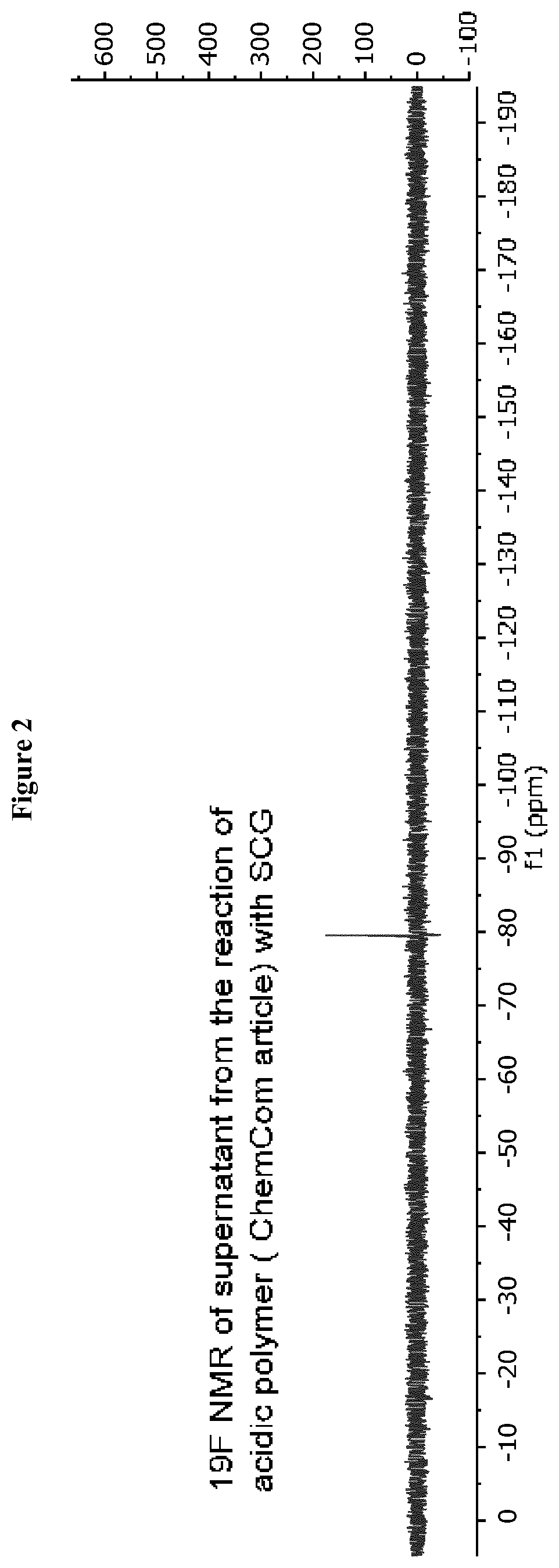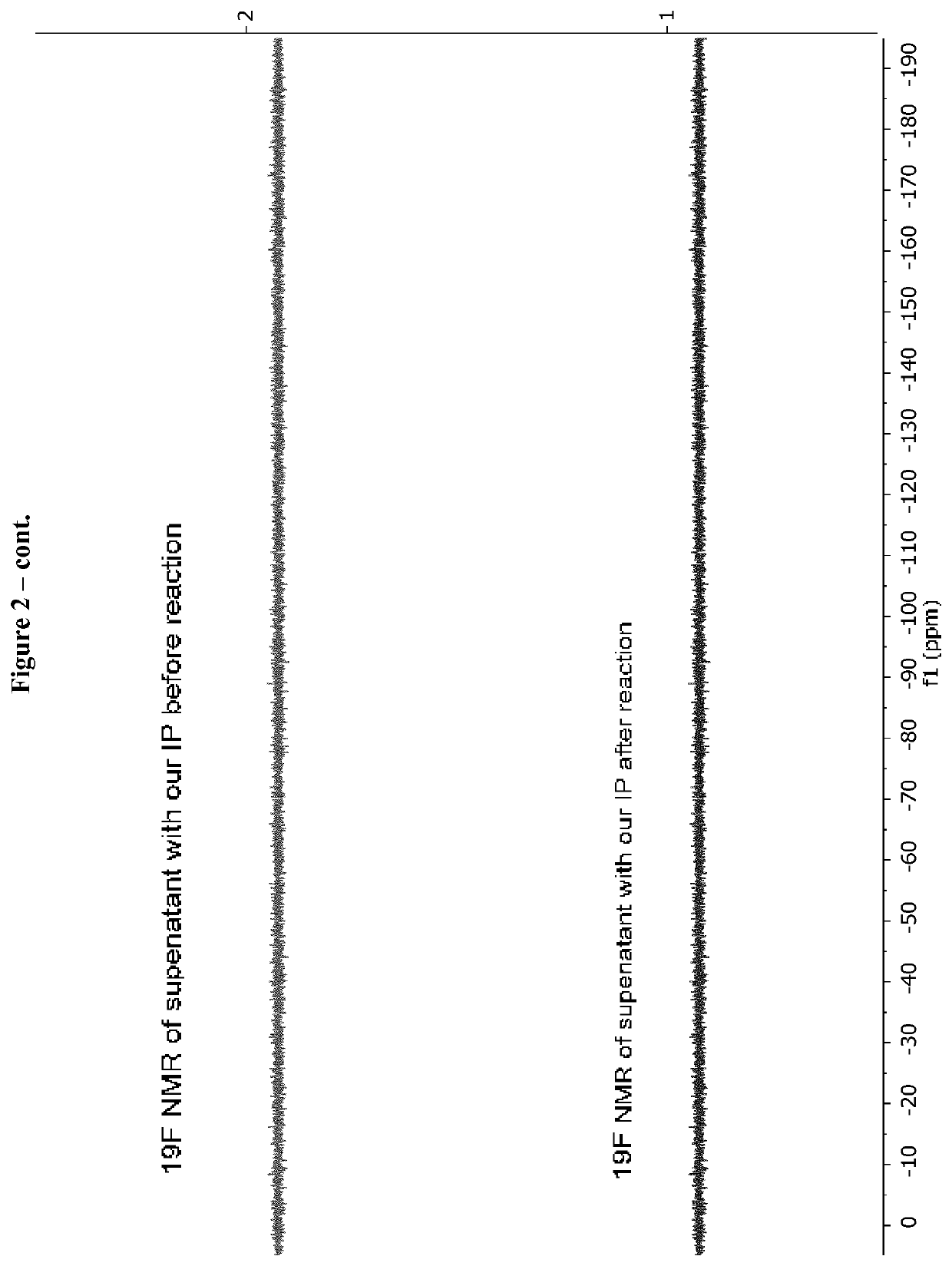Ionic polymers and use thereof in processing of biomass
a technology of ionic polymers and biomass, applied in the direction of saccharide production, chemical/physical processes, textiles and papermaking, etc., can solve the problems of high pretreatment cost, increased waste, and high temperature and pressure for diluent acids
- Summary
- Abstract
- Description
- Claims
- Application Information
AI Technical Summary
Benefits of technology
Problems solved by technology
Method used
Image
Examples
examples
[0192]Preparation of Ionic Polymers
[0193]A generalized scheme of the ionic polymer IP 3 (poly[1,3-bi(4-vinylbenzylimidazolium)-co-4-vinylbenzylsulfonium][triflate]) preparation is shown in FIG. 3 and the details for each step are provided below.
[0194]Preparation of Bi-Vinylbenzene-Imidazolium Chloride ([Bvbint][Cl]):
[0195]A mixture of 1-trimethylsilylimidazole (0.100 mol) and chloromethylstyrene (0.242 mol) in dichloromethane (50 mL) was heated under reflux for 24 h. The solvent and trimethylsilyl chloride (Me3SiCl) was removed under reduced pressure and the remaining solid was washed with diethyl ether (3×15 mL) and dried under vacuum for 24 h.
[0196]Preparation of the Monomer [Bvbim][vbSO3]:
[0197]A mixture of [Bvbim]Cl (0.1 mol) and 4-vinylbenzenesulfonic acid sodium salt (0.1 mol) was mixed at RT in H2O for 6 h. Afterwards, the reaction mixture was decanted with dichloromethane (3×20 ml), and the organic phase was combined from each time and dried in the rotar vap.
[0198]Preparatio...
PUM
| Property | Measurement | Unit |
|---|---|---|
| temperature | aaaaa | aaaaa |
| temperature | aaaaa | aaaaa |
| temperature | aaaaa | aaaaa |
Abstract
Description
Claims
Application Information
 Login to view more
Login to view more - R&D Engineer
- R&D Manager
- IP Professional
- Industry Leading Data Capabilities
- Powerful AI technology
- Patent DNA Extraction
Browse by: Latest US Patents, China's latest patents, Technical Efficacy Thesaurus, Application Domain, Technology Topic.
© 2024 PatSnap. All rights reserved.Legal|Privacy policy|Modern Slavery Act Transparency Statement|Sitemap



